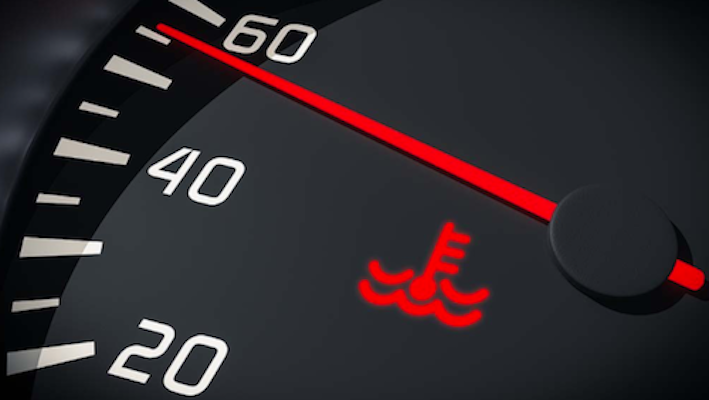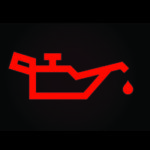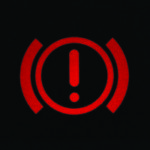

There’s nothing more intimidating while driving then when your dashboard lights up like a Christmas tree and you are suddenly faced with a serious problem. While vehicle warning lights can be scary, they are designed to tell us in advance of a serious problem or issue that can affect our vehicle engine or the safety of its occupants. Bottom-line is to always heed the warnings of your vehicle.
Our vehicles can display a wide range of warning lights or indicators. These lights can provide us with maintenance reminders or safety concerns, for example:
Maintenance or Safety Warnings (examples):
- Service Vehicle
- Oil Change
- Windshield Wiper Fluid
- Doors or Locks
- Door Ajar
- Seat Belt or Air Bags
Many of us are familiar with the daily warning light examples above that we may see on our dashboard. The warnings that are not seen until there’s an issue are the ones that scare us the most. In this article, we explain the warning lights that you should address promptly when they are displayed on your dashboard.
Warning Lights that Should Not Be Overlooked
No warning light should ever be overlooked but there are some that require immediate attention.
 Tire Pressure: Today’s vehicles have a tire pressure monitoring capability that can read the tire pressure for all four tires. If the tire pressure goes below the set value, the warning light will display. Tire pressure can change in different weather conditions. Always follow your tire’s recommended air pressure levels. If this light is on, make sure to check your tire for a possible leak or flat and fill it with the appropriate amount of air.
Tire Pressure: Today’s vehicles have a tire pressure monitoring capability that can read the tire pressure for all four tires. If the tire pressure goes below the set value, the warning light will display. Tire pressure can change in different weather conditions. Always follow your tire’s recommended air pressure levels. If this light is on, make sure to check your tire for a possible leak or flat and fill it with the appropriate amount of air.
 Oil Pressure: Your vehicle may display a check oil or oil pressure light when the vehicle’s oil level is below acceptable levels. Oil is a critical component in maintaining the lubrication of your engine’s parts. If your oil pressure light is displayed, make sure to check the oil gauge. If the oil level is low, replenish your vehicle’s oil. If this continues to stay lit, get your vehicle to a service professional immediately and minimize driving. If you continue to drive, your engine will sustain severe damage.
Oil Pressure: Your vehicle may display a check oil or oil pressure light when the vehicle’s oil level is below acceptable levels. Oil is a critical component in maintaining the lubrication of your engine’s parts. If your oil pressure light is displayed, make sure to check the oil gauge. If the oil level is low, replenish your vehicle’s oil. If this continues to stay lit, get your vehicle to a service professional immediately and minimize driving. If you continue to drive, your engine will sustain severe damage.
 Engine Temperature: During operation, your vehicle is subjected to extreme amounts of friction and heat. The cooling system in your vehicle is designed to maintain your vehicle’s temperature. If something goes wrong with components of your vehicle’s cooling system, such as a leak or drop in coolant, or a fan, belt or hose issue, your vehicle may begin to overheat. If the temperature warning displays, check the coolant and belts, fans, or hoses. Do not let the vehicle overheat because it will cause further damage to your engine. Have your vehicle serviced immediately. You should have it towed to our shop instead of driving it.
Engine Temperature: During operation, your vehicle is subjected to extreme amounts of friction and heat. The cooling system in your vehicle is designed to maintain your vehicle’s temperature. If something goes wrong with components of your vehicle’s cooling system, such as a leak or drop in coolant, or a fan, belt or hose issue, your vehicle may begin to overheat. If the temperature warning displays, check the coolant and belts, fans, or hoses. Do not let the vehicle overheat because it will cause further damage to your engine. Have your vehicle serviced immediately. You should have it towed to our shop instead of driving it.
 Brake Warning Light: The brake light is typically red in color because of the severity of the issue that may occur when the light goes on. In some vehicles, the brake warning light is the same light that is lit with you have the emergency brake on. If you start your vehicle and the brake warning light is lit, make sure the emergency brake isn’t engaged. If it comes on when you are driving, safely pull over and call for a tow. The brakes are unsafe and you may not be able to stop properly, especially in an emergency situation.
Brake Warning Light: The brake light is typically red in color because of the severity of the issue that may occur when the light goes on. In some vehicles, the brake warning light is the same light that is lit with you have the emergency brake on. If you start your vehicle and the brake warning light is lit, make sure the emergency brake isn’t engaged. If it comes on when you are driving, safely pull over and call for a tow. The brakes are unsafe and you may not be able to stop properly, especially in an emergency situation.
When it comes to your vehicle’s warning systems, make sure to err on the side of caution. While in some cases you can continue to operate your vehicle’s with warning lights, the problem will eventually catch up with you and could cause serious damage or harm to your vehicle or even you and your passengers.
If any of your warning lights stay on, schedule an appointment with our auto repair shop in Staten Island, NY. If it’s a “red” critical warning light, have your car, truck or van towed to our shop. We will get to work diagnosing the problem and will have you back on the road as quickly as possible. Contact Colonial Service Station today to set up a time to bring your vehicle in.
